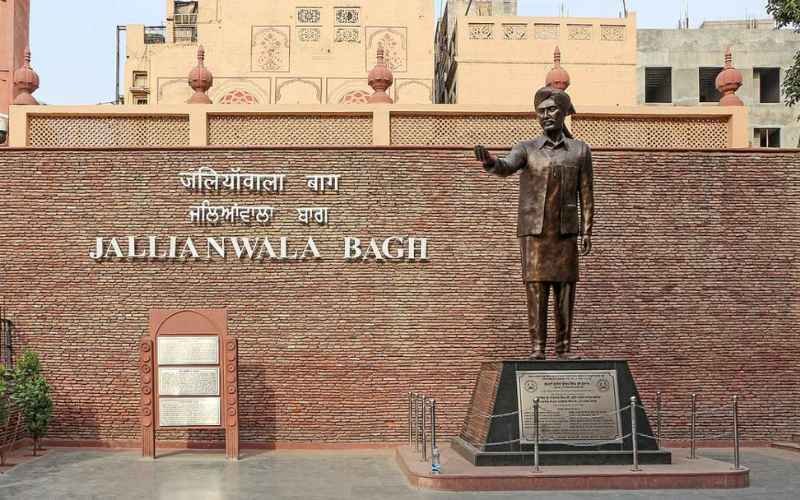The Jallianwala Bagh Massacre of 1919 stands as a haunting symbol of colonial brutality and the resilience of India’s struggle for independence. While it is widely recognized as a pivotal moment in history, delving deeper reveals a tapestry of lesser-known aspects that enrich our understanding of its profound impact.
Jallianwala Bagh Massacre

Jallianwala Bagh Massacre
Firstly, the massacre didn’t occur in isolation; it was a culmination of simmering tensions fueled by British colonial policies and the aspirations of Indian nationalists. The Rowlatt Act, enacted in 1919, severely curtailed civil liberties and inflamed public discontent. Amritsar, where the massacre took place, was a hotbed of nationalist fervor, with its populace deeply aggrieved by British oppression.
Furthermore, the timing of the massacre on April 13, 1919, during the Sikh festival of Baisakhi, magnified its impact. The influx of pilgrims and celebrants into Amritsar meant that the crowd in Jallianwala Bagh was not just composed of locals but also included people from surrounding areas. This influx of innocent civilians, gathered for peaceful purposes, underscores the tragedy of the event.
Moreover, the layout of Jallianwala Bagh itself played a significant role in the massacre. The walled garden had only one narrow entrance, making it a virtual trap for the thousands who had gathered. British troops, under the command of Brigadier General Reginald Dyer, positioned themselves at this sole exit, effectively sealing the fate of those trapped inside.
The casualty figures from the massacre remain a point of contention, highlighting the chaotic nature of the event. While official records indicate several hundred deaths and many more injured, some accounts suggest the toll could be much higher. The lack of precise documentation reflects the scale of the tragedy and the attempts to suppress its true extent.
Internationally, news of the massacre ignited a firestorm of condemnation against British colonial rule. The brutal crackdown on unarmed civilians shocked the world’s conscience and galvanized support for India’s independence movement. It served as a catalyst for heightened resistance against British tyranny and spurred global awareness of the injustices perpetrated in the name of empire.
Today, the Jallianwala Bagh memorial stands as a poignant reminder of the sacrifices made in the pursuit of freedom. It serves as a sacred space for remembrance and reflection, preserving the memory of those who perished and honoring their unwavering commitment to liberty.
In this blog post, we’ll delve into seven such lesser-known facts that offer a broader understanding of this infamous tragedy.
Exploring Lesser-Known Aspects of the Jallianwala Bagh Massacre
The Amritsar Connection:
The massacre itself unfolded within the confines of Jallianwala Bagh in Amritsar, a city deeply enmeshed in India’s nationalist movement. Amritsar served as a focal point for anti-colonial sentiment, with a rich history of resistance against British rule. The events leading up to the massacre were shaped by the city’s political landscape, characterized by simmering tensions and fervent activism.
Martial Law Imposed:
In response to the escalating unrest, the British authorities imposed martial law in Amritsar, imposing strict measures to suppress dissent. The imposition of martial law further exacerbated the discontent among the local populace, who viewed it as a blatant infringement upon their basic rights and freedoms. The heavy-handed tactics employed by the colonial administration only served to inflame passions and set the stage for the tragic events that would unfold.
Timing of the Massacre:
The fateful day of April 13, 1919, marked the observance of Baisakhi, a significant Sikh festival celebrated with great pomp and fervor in Amritsar. The convergence of religious festivities and political agitation drew a large crowd to the city, swelling the numbers at Jallianwala Bagh. The timing of the massacre during this auspicious occasion heightened its impact, amplifying the scale of the tragedy and further galvanizing public outrage.
Blocked Exits:
Jallianwala Bagh, with its high walls and limited access points, presented a grim reality for those caught within its confines during the massacre. British troops, under the command of Brigadier General Reginald Dyer, strategically positioned themselves at the sole entrance to the garden, effectively sealing the fate of the unarmed civilians trapped inside. The deliberate blocking of exits deprived the crowd of any chance of escape, leading to a catastrophic loss of life.
Casualty Figures:
The true extent of the human toll inflicted by the Jallianwala Bagh massacre remains shrouded in uncertainty and controversy. Estimates of the number of casualties vary widely, with figures ranging from several hundred to over a thousand killed, and countless others injured. The absence of comprehensive official records and the chaos of the event contribute to the difficulty of ascertaining the exact casualty figures, underscoring the magnitude of the tragedy.
International Outcry:
News of the Jallianwala Bagh massacre reverberated far beyond the borders of India, sparking widespread condemnation and outrage across the globe. The brutality of the British response elicited strong reactions from various quarters, including political leaders, intellectuals, and the general public. The international outcry served to shine a spotlight on the atrocities of colonial rule and bolstered support for India’s struggle for independence on the world stage.
Legacy and Memorial:
The Jallianwala Bagh massacre left an indelible mark on the collective consciousness of the Indian people, serving as a stark reminder of the sacrifices made in the pursuit of freedom. The site of the massacre has since been transformed into a solemn memorial, preserving the memory of those who perished and honoring their unwavering commitment to the cause of independence. The memorial stands as a poignant testament to the resilience of the human spirit in the face of oppression and serves as a symbol of hope for future generations.
Conclusion:
The Jallianwala Bagh massacre stands as a stark reminder of the injustices inflicted during India’s colonial era and the resilience of those who fought for freedom. By uncovering these lesser-known facts, we gain a deeper appreciation for the complexities of this tragic event and its enduring significance in shaping India’s history.
The top 20 frequently asked questions about “Unveiling History: 7 Lesser-Known Facts about the Infamous Jallianwala Bagh Massacre of 1919”
- What is the Jallianwala Bagh Massacre?
- The Jallianwala Bagh Massacre was a tragic event that occurred on April 13, 1919, in Amritsar, India, where British troops opened fire on unarmed civilians, resulting in hundreds of deaths and injuries.
- Why is the Jallianwala Bagh Massacre significant?
- The massacre is significant as it symbolizes the brutal repression of colonial rule and fueled the Indian independence movement.
- What are some lesser-known facts about the Jallianwala Bagh Massacre?
- Lesser-known facts include the intricate involvement of Amritsar’s political landscape, the imposition of martial law, the strategic timing of the massacre, the deliberate blocking of exits, uncertain casualty figures, international outcry, and the lasting legacy through memorials.
- Why was Amritsar significant in the context of the massacre?
- Amritsar was a hub of nationalist activities, and tensions were high due to the implementation of the Rowlatt Act by the British authorities, leading to increased discontent among the local population.
- What was the role of martial law in the events leading to the massacre?
- Martial law was imposed in Amritsar by the British authorities in response to growing unrest, further exacerbating resentment among the populace and setting the stage for the tragic events.
- Why was the timing of the massacre significant?
- The massacre coincided with Baisakhi, a significant Sikh festival, attracting large crowds to Amritsar, thereby amplifying its impact and the scale of the tragedy.
- How were exits blocked during the massacre?
- Jallianwala Bagh had only one narrow entrance, which was blocked by British troops under Brigadier General Reginald Dyer, effectively trapping the unarmed civilians inside.
- Why are casualty figures uncertain?
- The chaos of the event and the lack of comprehensive official records contribute to the uncertainty surrounding casualty figures, with estimates ranging from several hundred to over a thousand killed.
- How did the international community react to the massacre?
- The brutality of the British response drew widespread condemnation from across the globe, sparking outrage and bolstering support for India’s independence movement on the international stage.
- What is the legacy of the Jallianwala Bagh Massacre?
- The massacre left a deep scar on the collective memory of the Indian people and became a rallying cry for independence, with the site now preserved as a memorial.
- Was the Jallianwala Bagh Massacre an isolated incident?
- No, it was not isolated. It was part of a broader pattern of British repression and exploitation in colonial India.
- Did any British officials face consequences for the massacre?
- While General Dyer, the commanding officer, was relieved of his duties, he became a hero to some in Britain. No significant punitive measures were taken against the British administration responsible for the massacre.
- How did the massacre impact India’s independence movement?
- The massacre galvanized public opinion against British rule and strengthened the resolve of Indian nationalists to fight for independence.
- What role did Mahatma Gandhi play in response to the massacre?
- Gandhi, already a prominent figure in the Indian independence movement, intensified his campaign of nonviolent resistance in response to the massacre, advocating for Satyagraha (nonviolent civil disobedience).
- Were there any immediate repercussions for British rule in India following the massacre?
- The massacre led to a wave of protests and strikes across India, signaling growing discontent with British rule and laying the groundwork for future resistance movements.
- How did the Jallianwala Bagh Massacre impact British-Indian relations?
- The massacre strained relations between the British colonial administration and the Indian populace, deepening mistrust and resentment towards British rule.
- Are there any controversies surrounding the memorialization of the massacre?
- There have been debates over the years regarding the appropriate commemoration and interpretation of the massacre, reflecting differing perspectives on its historical significance.
- Has the British government formally apologized for the Jallianwala Bagh Massacre?
- While some British officials have expressed regret for the massacre, there has been no formal apology issued by the British government.
- How does the Jallianwala Bagh Massacre continue to be remembered in India today?
- The massacre is commemorated annually in India, with ceremonies held at the Jallianwala Bagh memorial to honor the victims and reaffirm the nation’s commitment to freedom and justice.
- What lessons can be learned from the Jallianwala Bagh Massacre?
- The massacre serves as a stark reminder of the horrors of colonialism and the importance of safeguarding human rights and democratic values. It underscores the enduring legacy of struggle and sacrifice in the quest for freedom and equality.



